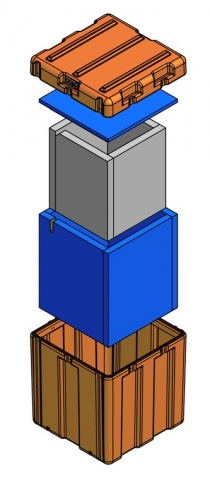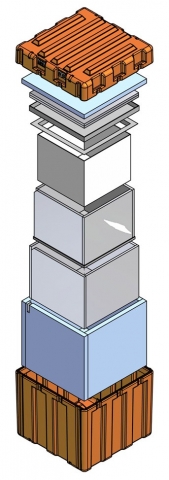Station Enclosure for Year Round Polar Programs
Most electronic equipment and batteries used for seismic stations become unreliable at temperatures below -45C. For this reason, it is very challenging to make year around seismic studies in the Arctic and especially the Antarctic, where winter temperature can dip below -80C. On the East Antarctica Plateau, ambient temperatures a couple of feet below the snow surface are between -50C and -60C.


In an attempt to make dependable seismic recordings in these extreme environments, PASSCAL's Polar Group has designed special enclosures to house the data acquisition system (DAS) and its batteries to keep them at a reasonable temperature throughout the winter. To increase the ease and efficiency of installation, the enclosure was designed in such a way that it can be set in place in the field without having to open the lid. All electrical connections are made available to the outside of the box, including the console connection to the DAS.
The outer casing of the enclosure is made of molded, lightweight, high-impact polyethylene. The insulation is mainly made of two layers of vacuum insulated panel and one layer of extruded polystyrene. Much attention was taken to the seals between components to minimize convective heat loss. A removable lid was built in such a way as to have minimal heat loss through its seal as well.
The external dimensions of the enclosures are 30" x 30" x 35". With the insulation, that leaves a little more than 4 ft3 of space inside, which is ample room for a 100Ah rechargeable battery, a full set of Lithium batteries, a charge controller box and a DAS with all its cabling. The weight of the box empty is approximately 140 lbs (65 Kg). Schematics of the enclosure are available here.
- Home
- General Information
- Instrumentation
- Dataloggers
- Sensors
- All-In-One Systems
- Power Systems
- Field Procedures
- Controlled Sources
- Seismic Source Facility
- Magnetotelluric Systems at PASSCAL
- Ground Penetrating Radar
- Power and Memory Calculations Form
- Data Archiving
- Apply for a PI Account
- Experiment Scheduling
- Polar
- Important Hardware/Software Notes
- USArray
- Software


